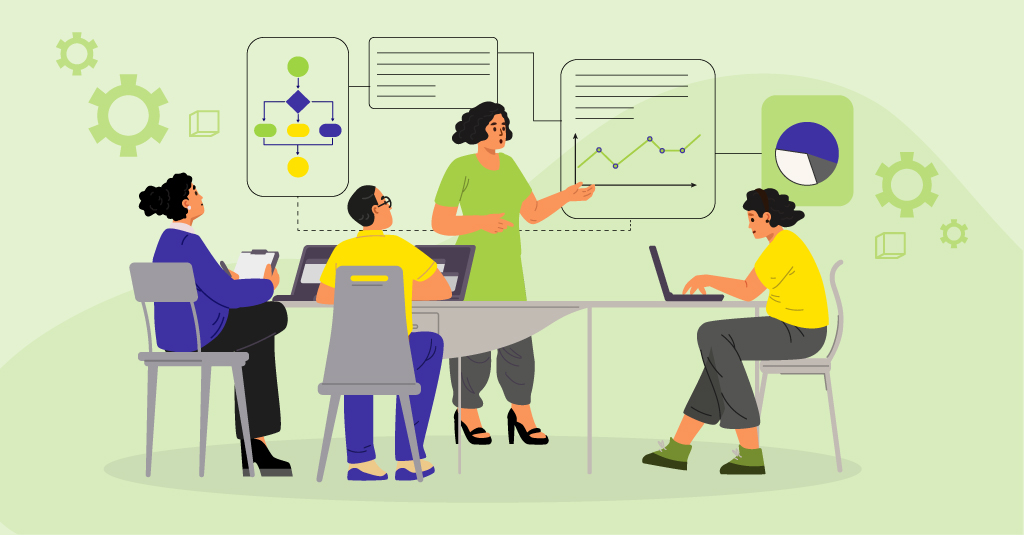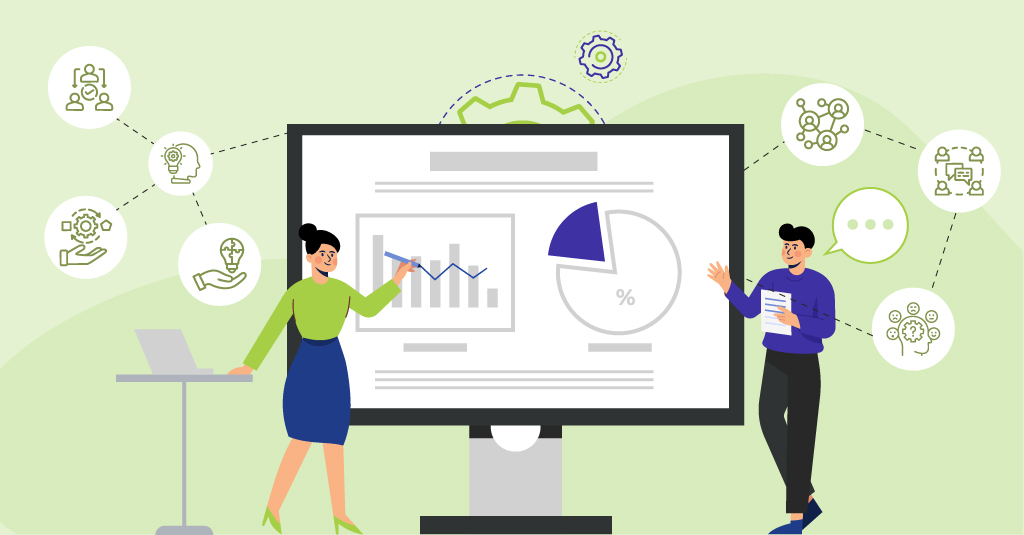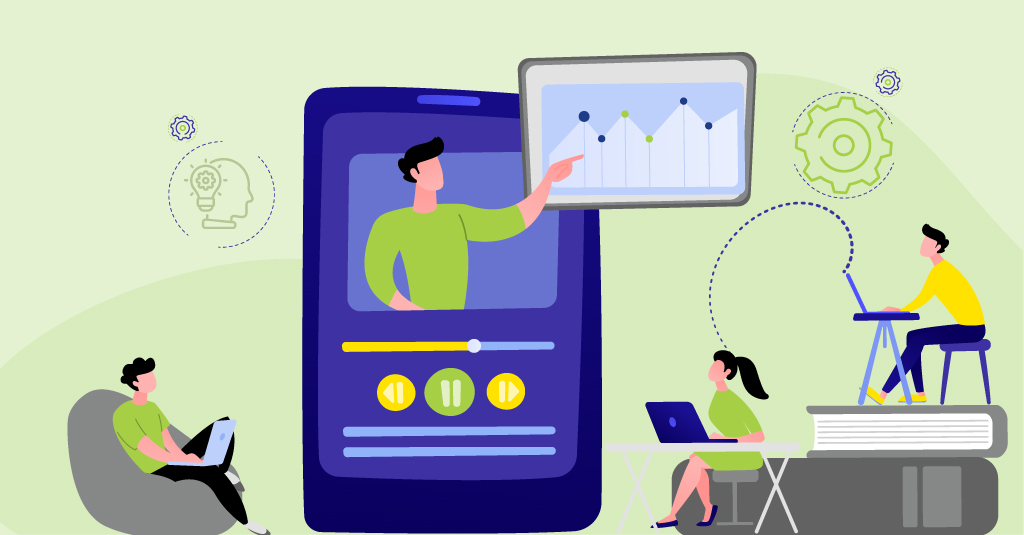Not every organization starts at the same point in their learning journey, and that’s completely okay. Some are building something brand new, while others already have some great interventions in place but need help turning them into something truly impactful. In this chapter, we break down two clear and flexible pathways to help you take action, no matter where you’re starting from.
Think of it like this: are you building a house from the ground up? Or are you renovating a space that already exists to make it more functional, beautiful, and livable? Both approaches are valid, and both can lead to powerful, performance-driven learning.
Approach 1: End-to-End Learning Impact Design
Designing Learning Like Architecture—Structured, Intentional, and Built for Growth
This approach is perfect if you’re starting from scratch. You may have a clear need but no existing content, strategy, or delivery plan in place. That’s actually a great place to begin, it allows us to build every layer with intention and alignment.
We begin by defining the business goals, then proceed to create a strategic learning blueprint. Every phase of the impact framework—needs analysis, stakeholder workshops, content design, learner engagement, spaced reinforcement, measurement—gets purposefully planned to align with the outcomes you care about most.
Approach 1: End-to-End Impact Design
Best for: New product rollouts, change initiatives, leadership programs, or organization-wide capability development.
A full strategy-to-execution roadmap.
Impact measurement tools and templates built-in from the start.
Cohesive design and delivery plan.
Ongoing support for reinforcement and scaling.
This isn’t just about content delivery. It’s about shaping a learning experience that becomes part of the organization’s fabric—and shows clear results over time.
Approach 2: Custom Learning Impact Amplification
Turning Existing Learning into a Performance Engine.
Already have a course? Great. This approach helps you make it better. Maybe your course is well, designed but hasn’t led to real behavior change. Or perhaps it’s engaging but isn’t aligned to any measurable business metrics. In this approach, we refine what you have and fill in the missing pieces.
We audit the current experience, speak to learners and stakeholders, and identify where we can elevate the impact. Sometimes it’s adding a pre-launch buzz strategy. Sometimes it’s plugging in post-training nudges or applying a feedback framework. Often, it connects learning outcomes more clearly to performance expectations.
Approach 2: Custom Impact Amplification
Best for: Compliance programs, technical skill trainings, onboarding modules, or leadership courses that need to show stronger ROI.
Gap analysis and quick wins.
Add-on elements like microlearning, peer learning, or impact surveys.
Alignment with performance metrics.
Integration with existing systems and workflows.
You don’t need to do away with what you’ve already built. We help you make it work harder—and smarter.
Overcoming Common Barriers
No matter which approach you choose, implementation may sometimes run into a few familiar roadblocks.
Some of the most common challenges include:
Limited stakeholder buy-in: When key leaders aren't fully invested, learning initiatives struggle to gain traction or visibility.
Technology gaps: Outdated or missing tools make it difficult to deliver, track, or scale learning effectively.
Lack of data or unclear success metrics: Without defined outcomes, it's hard to measure or prove the value of learning.
Competing priorities: Learning often gets deprioritized when teams are ultitasking or attending to urgent demands.
Here is how we can help you navigate some of these challenges:
| Barrier | What Usually Happens | How we can Tackle It |
|---|---|---|
| Limited stakeholder buy-in | Learning initiatives are seen as optional or “nice to have,” leading to low engagement. | Involve stakeholders early through focus groups and workshops, align learning goals to business priorities. |
| Lack of data or unclear success metrics | It’s difficult to prove learning impact or secure ongoing support. | Establish measurable outcomes upfront, define metrics, and implement a consistent measurement framework. |
| Technology gaps | Content delivery and tracking are fragmented, making the experience disjointed. | Assess the tech landscape, recommend scalable solutions, and offer alternatives where needed. |
| Competing priorities or bandwidth issues | Learning gets pushed down the list, resulting in low participation or delays. | Embed learning into the workflow, offer bite-sized options, and secure leadership support to prioritize it. |
Moving Forward with Purpose
Wherever your learning initiative stands—whether it’s still on paper or already in motion, there’s always an opportunity to strengthen its impact. With a clear framework, thoughtful design, and practical implementation, learning can gradually evolve from a standalone activity to a meaningful part of how your organization builds skills and drives performance.
Our approach is shaped by working closely with teams across different industries and stages of maturity. Whether helping build programs from scratch or working to fine-tune existing ones, we’ve learned that even small changes, when done intentionally, can create real value over time.
In the next blog, we’ll share a few examples from the field. These case studies offer a glimpse into how parts of the impact framework have been applied in real contexts—what worked well, what we learned along the way, and how organizations are beginning to link learning more clearly with outcomes.
Designing for impact isn’t a one-size-fits-all effort; it’s about meeting your organization where it is and building forward with intention. Whether you’re launching something new or improving what already exists, aligning learning with business goals at every stage can lead to stronger outcomes and real change. For more tools, case studies, and step-by-step guidance, download our eBook Beyond Training: An Actionable Guide to Learning That Delivers Measurable Business Impact.
















